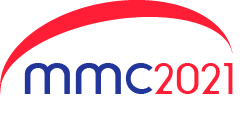ContactJ: Lipid Droplets-Mitochondria Contacts measurement by Fluorescence Microscopy and Image Analysis
- Abstract number
- 245
- Presentation Form
- Poster Flash Talk + Poster
- Corresponding Email
- [email protected]
- Session
- Stream 2: Software and Smart Microscopy
- Authors
- Gemma Martin (1), Marta Bosch (2, 3), Elisenda Coll (1), Albert Pol (2, 3, 4), Maria Calvo (1, 2)
- Affiliations
-
1. Advanced Optical Microscopy Facility. Scientific and Technological Centers. University of Barcelona
2. Department of Biomedical Sciences, Faculty of Medicine, Universitat de Barcelona
3. Cell Compartments and Signaling Group, Institut d'Investigacions Biomèdiques August Pi i Sunyer (IDIBAPS)
4. Institució Catalana de Recerca i Estudis Avançats (ICREA)
- Keywords
Contact sites, Lipid Droplets, Mitochondria, Image Analysis, ImageJ, Fluorescence Microscopy
- Abstract text
Lipid droplets (LDs) are the major lipid storage organelles of eukaryotic cells and together with mitochondria key regulators of cell’s bioenergetics. In order to achieve their functions, LDs communicate with mitochondria and other organelles forming membrane contact sites1, “metabolic synapses”, to ensure that lipid provision occurs where and when necessary2–4. Whereas Electron Microscopy allows accurate and precise characterization of contacts, their analysis on a large number of cells and conditions can become a long-term process. On the other hand, confocal fluorescence microscopy combined with advanced image analysis methods enable to extend contact analysis to hundreds of cells and multiple conditions.
In the present work, we describe a novel and straight image analysis method3 to identify and quantify contact regions between LD and mitochondria in fluorescence microscopy images allowing the automatic analysis of hundreds of cells and multiple conditions. We have developed ContactJ, a macro script for the open-source image analysis software ImageJ5,6. This image analysis workflow combines colocalization7 and skeletonization methods, enabling the detection of LD-Mitochondria contacts together with a complete characterization of organelles and cellular parameters (morphometry and distribution). The correlation and normalization of these parameters contribute to the complex description of cells response under different experimental conditions such as metabolic or pathogenic states. The macro automatically detects and measures LD-mitochondria linear contacts by combining standard and machine learning8 segmentation processes and the novel use of colocalization7 together with skeletonization methods from a large number of fluorescence images. Finally, along the execution of the macro all the data is stored in arrays (cell, LD and mitochondria areas and perimeters, contact perimeter, number of contacts, etc). Moreover, this data is stored in a .txt database file allowing the traceability of the results for each cell and each image.
The described image analysis workflow unveils a wide range of possibilities in the automatic quantification of LD and mitochondria contacts. Obtaining contact regions together with multiple cell and organelles parameters allow building descriptive statistics of the cells response. Moreover, its application in a large number of images enables the use of High Content Screening and Analysis, highly increasing the quality and statistical confidence of the results.
- References
(1) Parton, R. G.; Bosch, M.; Steiner, B.; Pol, A. Novel Contact Sites between Lipid Droplets, Early Endosomes, and the Endoplasmic Reticulum. Journal of Lipid Research. American Society for Biochemistry and Molecular Biology Inc. November 2020, p 1364. https://doi.org/10.1194/jlr.ILR120000876.
(2) Schuldiner, M.; Bohnert, M. A Different Kind of Love – Lipid Droplet Contact Sites. Biochimica et Biophysica Acta - Molecular and Cell Biology of Lipids. Elsevier B.V. October 1, 2017, pp 1188–1196. https://doi.org/10.1016/j.bbalip.2017.06.005.
(3) Bosch, M.; Sánchez-Álvarez, M.; Fajardo, A.; Kapetanovic, R.; Steiner, B.; Dutra, F.; Moreira, L.; López, J. A.; Campo, R.; Marí, M.; Morales-Paytuví, F.; Tort, O.; Gubern, A.; Templin, R. M.; Curson, J. E. B.; Martel, N.; Català, C.; Lozano, F.; Tebar, F.; Enrich, C.; Vázquez, J.; Del Pozo, M. A.; Sweet, M. J.; Bozza, P. T.; Gross, S. P.; Parton, R. G.; Pol, A. Mammalian Lipid Droplets Are Innate Immune Hubs Integrating Cell Metabolism and Host Defense. Science (80-. ). 2020, 370 (6514). https://doi.org/10.1126/science.aay8085.
(4) Bosch, M.; Parton, R. G.; Pol, A. Lipid Droplets, Bioenergetic Fluxes, and Metabolic Flexibility. Seminars in Cell and Developmental Biology. Elsevier Ltd December 1, 2020, pp 33–46. https://doi.org/10.1016/j.semcdb.2020.02.010.
(5) Schindelin, J.; Arganda-Carreras, I.; Frise, E.; Kaynig, V.; Longair, M.; Pietzsch, T.; Preibisch, S.; Rueden, C.; Saalfeld, S.; Schmid, B.; Tinevez, J. Y.; White, D. J.; Hartenstein, V.; Eliceiri, K.; Tomancak, P.; Cardona, A. Fiji: An Open-Source Platform for Biological-Image Analysis. Nature Methods. Nat Methods July 2012, pp 676–682. https://doi.org/10.1038/nmeth.2019.
(6) Schneider, C. A.; Rasband, W. S.; Eliceiri, K. W. NIH Image to ImageJ: 25 Years of Image Analysis. Nature Methods. Nat Methods July 2012, pp 671–675. https://doi.org/10.1038/nmeth.2089.
(7) Bourdoncle, P. Colocalization Plugin https://imagej.nih.gov/ij/plugins/colocalization.html.
(8) Arganda-Carreras, I.; Kaynig, V.; Rueden, C.; Eliceiri, K. W.; Schindelin, J.; Cardona, A.; Seung, H. S. Trainable Weka Segmentation: A Machine Learning Tool for Microscopy Pixel Classification. Bioinformatics 2017, 33 (15), 2424–2426. https://doi.org/10.1093/bioinformatics/btx180.
